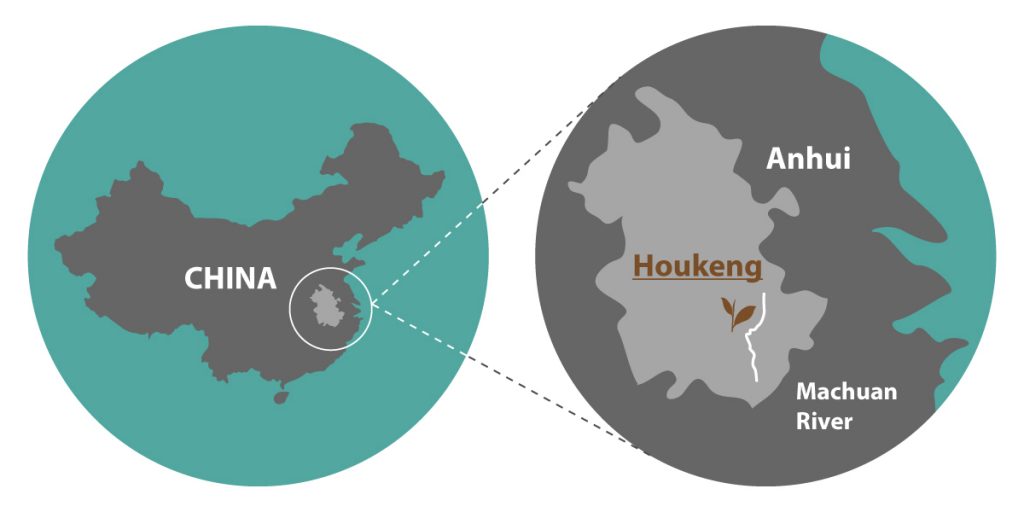Every tea taster dreams of discovering a remote, virtually inaccessible growing region producing exceptional tea. The discovery of Tai Ping Hou Kui was just such an experience for us.
Since our very first sourcing ventures, this tea had been on our “most wanted” list. Its name was well-known to us, as was the province where it is cultivated, but despite our efforts, we were continually returning empty-handed. Having finally located these lost producers with the help of Mr. Xie, a friend from the tea-producing region of Huang Shan Mao Feng, it became clear why the tea had previously eluded us: there are no roads leading to the gardens of Tai Ping Hou Kui.

Leaving Mr. Xie’s home in the magnificent province of Anhui, we had to travel several hours of country roads before stopping on the banks of a river. Because the plantations were not accessible by car, the rest of the journey would have to be made by boat.

The calm waters of the river reflected like a mirror the majestic Huang Shan mountains surrounding it. Having floated through this spectacular landscape for almost an hour, we arrived at the sloping fields of Taiping Hou Kui, one of the most beautiful sites we have had the luck to visit in all our years of sourcing. A patchwork of small tea gardens along the riverside gleamed an enchanting emerald green.
Mr. Ye, the producer we had arranged to meet there, belongs to a long line of producers who have all cultivated tea. The tea trees in his field were all planted by his ancestors. Like the other families in the village, he runs a small factory behind his house. He produces a tea that is characterized by its large, flattened leaves averaging around six centimeters in length. To achieve this remarkable form, Mr. Ye uses an artisanal method of transformation that was completely new to us.

A Crafted Leaf
The large-leaf cultivar used for the production of this tea is plucked with great care. With most grand cru teas, only the terminal bud and the two delicate first leaves on the stem are used. For Tai Ping Huo Kui, however, the leaves are allowed to mature a little longer before plucking.
Once plucked, the leaves are sorted and manually fired in a pan for about five minutes.
Rolling is the next step. The leaves are laid out on a fine metal grill one by one with care taken to make sure they do not touch. A second grill is placed over the leaves. The grills are then set on a wooden table, a cotton cloth laid over the frame, and a hand-held roller passed over the grill with a rapid motion.

The leaves are left in this frame for a final, wood-fired drying. This gradual drying lasts about an hour.
As the leaves’ transformation is entirely manual and the terroir’s area of cultivation is small, authentic Tai Ping Hou Kui teas are hard to find, even in China. With the rarity and originality of its trademark floral aromas, the Chinese often offer this tea as a gift for special occasions.
Reprinted with permission from the book Green Tea: A Quest for Fresh Leaf and Timeless Craft by Hugo Americi, Jasmin Desharnais, Francois Marchand and Kevin Gascoyne. Copyright 2015 Benjamin Press.
Tea Market
Get More Value from Your Tea: BRU Maker One
+41794574278
Jacque's Organics
(647) 804-7263
This is fascinating! Thank you for sharing.
Really enjoyed the photography in the article. Such rich and vibrant green colors really complement the subject of the tea itself.